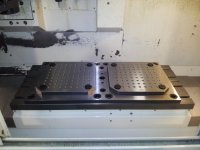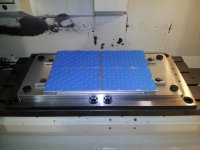zalectric
Plastic
- Joined
- Apr 17, 2015
- Location
- Taipei Taiwan
I have a Jergens ball lock system and I am planing to make a sub plate. I planned to make a aluminum subplate about 20mm thick. I read several thread and have made one about 15 years ago. I recently saw a mill were the pocket for thr jergens ball locks was machined into the oem steel table. It got me thinking... Is this a good or terrible idea?
No corrosion issues, no flatness problems, I get to keep the T slots,
No corrosion issues, no flatness problems, I get to keep the T slots,






